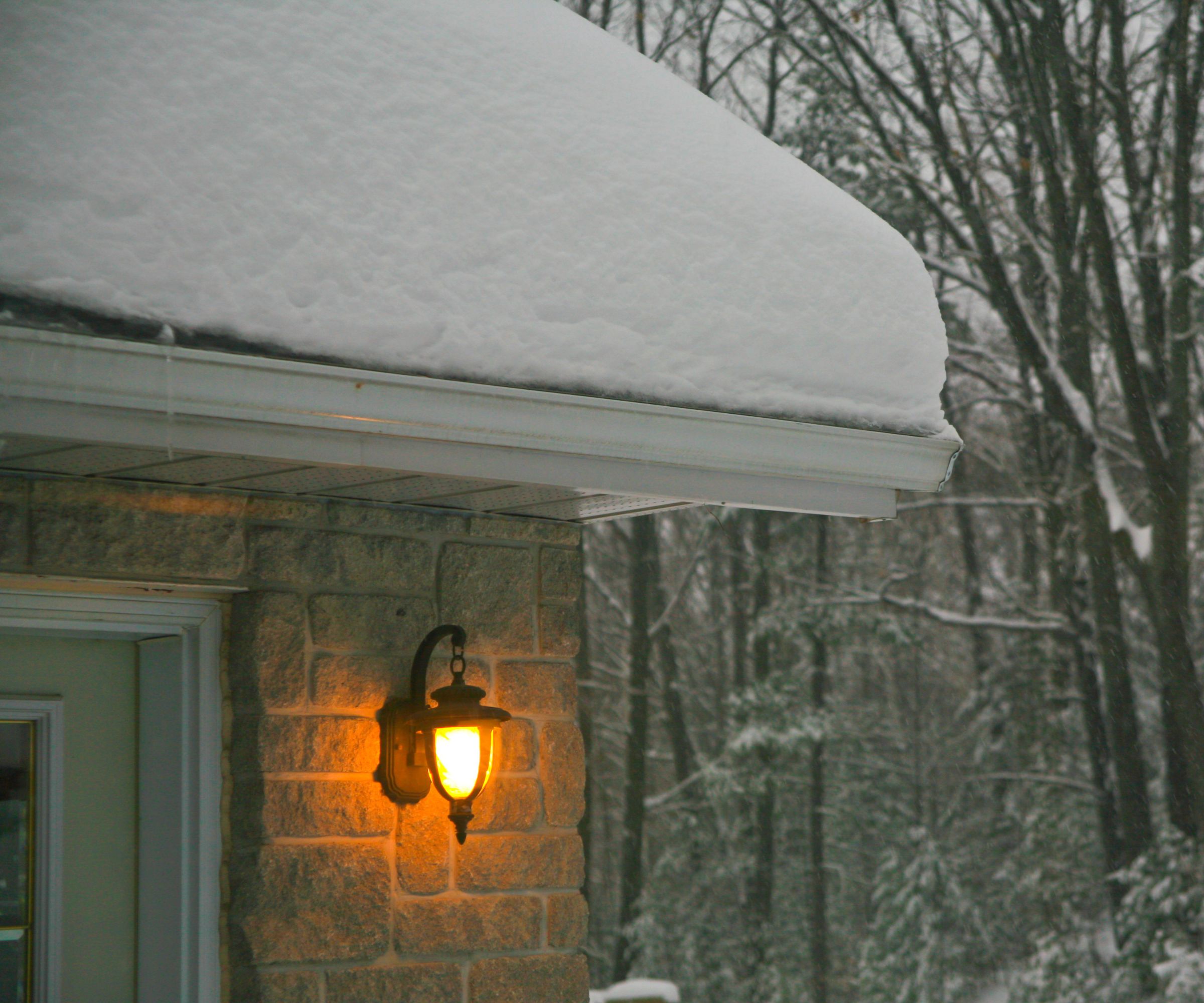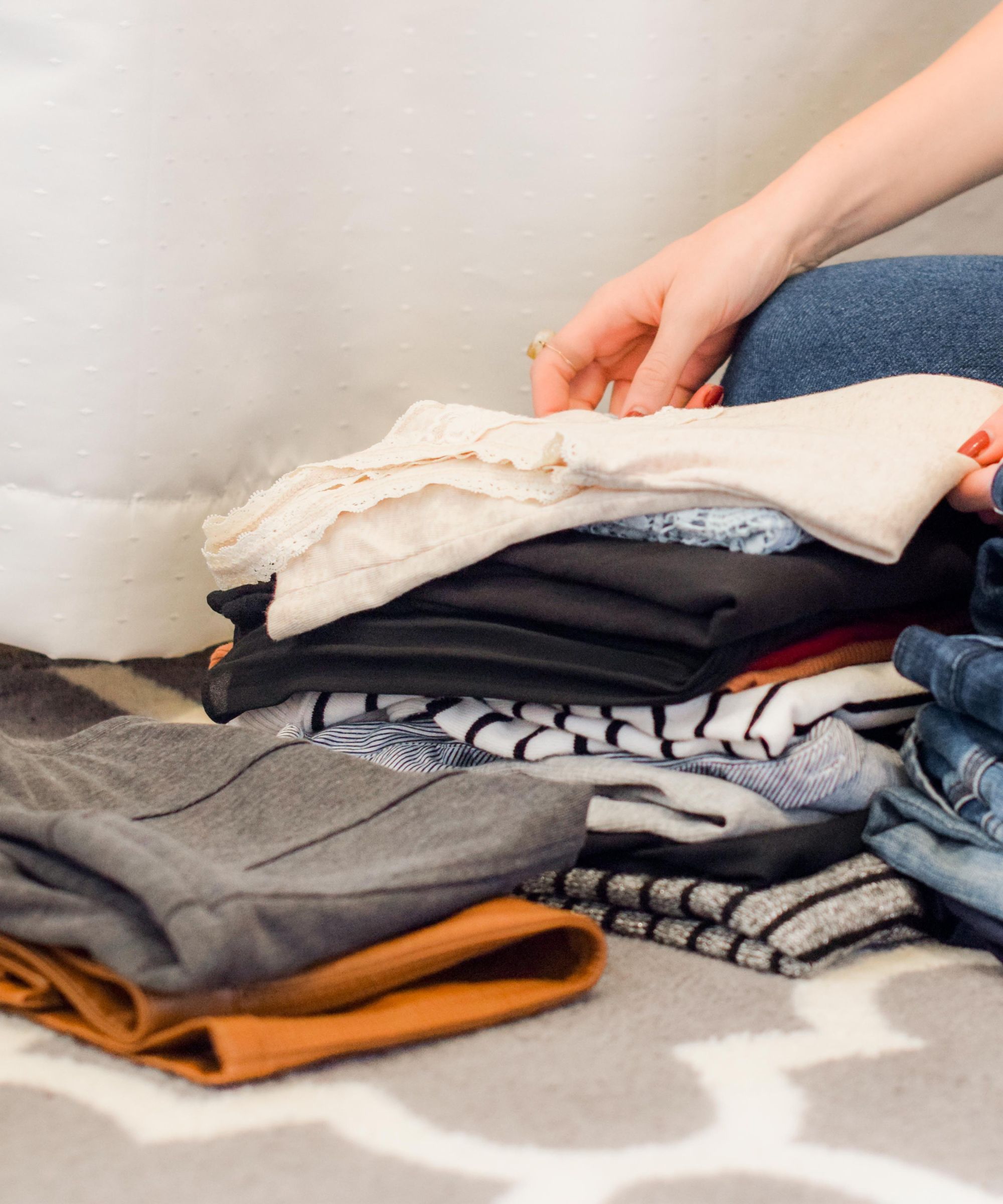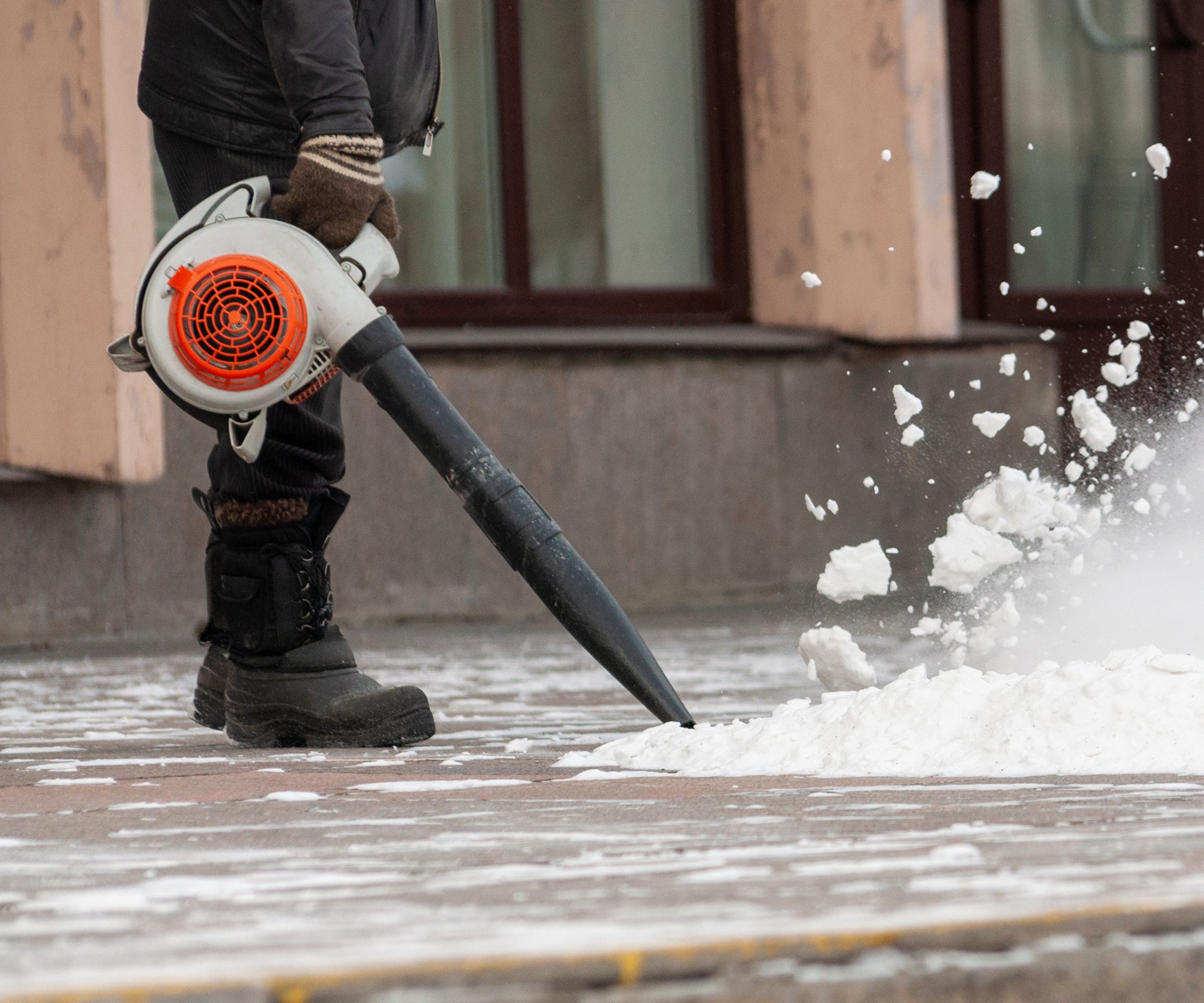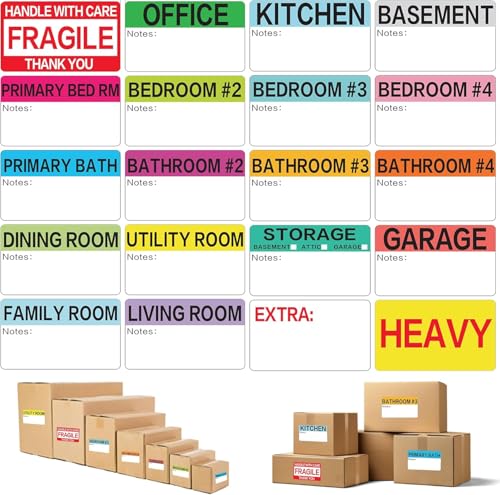I’ve moved house in winter 8 times – here are my top tips for getting belongings from A to B intact during foul weather
Advice for a smooth winter move, including things I have learned the very hard way


Moving house is always a challenge, but doing it in winter adds an extra layer of complexity. From icy paths to unpredictable weather, protecting your belongings while ensuring a smooth move can feel daunting.
Having moved house eight times in winter, I’ve made the mistakes so you don't have to! In this article, I reveal my eight top tips for ensuring your belongings arrive safe and sound even in foul weather, with bonus expert comment from home and removal pros.
Armed with these tips and your moving house checklist, you'll be snug in your new abode in no time, and your belongings intact.
Top tips for moving house in winter
1. Check the weather forecast

In winter, the weather can change quickly. Monitor the forecast in the days leading up to your move and have a contingency plan for adverse conditions. I live in England, the perpetual land of gray skies, rain and drizzle and obsessively keeping an eye on the forecast has helped me swerve having to unload mid-rain storms.
Here, sometimes just 15 minutes marks the difference between winter sun, and thundery gray clouds of doom that soak your furniture and open the gateway to furniture mold.
If a snowstorm or icy conditions is predicted on your moving day, remain flexible and prepared to adjust your schedule or allow extra time for loading and unloading.
Chris Amaral, owner of Safe Responsible Movers, says, 'Make sure to have a backup moving date in case of severe weather on your moving day. We've run into this many times – some days it's simply impossible to move. If you're tied to one date, it greatly reduces your options if there's a blizzard on moving day.
Design expertise in your inbox – from inspiring decorating ideas and beautiful celebrity homes to practical gardening advice and shopping round-ups.
'A week out from the move, start keeping an eye on the forecast and be in regular contact with your moving company about possible scheduling changes. If you're in a traditionally cold or snowy area, like Boston, chances are your movers have seen this problem before and will have potential solutions for you. The more communication, the better.'
2. Use heavy-duty packing materials

Winter weather means potential exposure to moisture, so choose durable, weather-resistant packing materials.
Opt for plastic bins with secure lids instead of cardboard boxes, which can easily get soggy and collapse if wet. Reinforce any cardboard boxes with extra tape and wrap vulnerable items in plastic bags to keep them dry. I made the mistake of using a cheap and flimsy brown packing tape and had multiple heavy boxes empty their contents from the bottom as I was hauling them into my new home. Not ideal.
After that happened to me in two different winter house moves, I loaded up my heavier items in plastic bins with lids on top. That also leaves them prime for storing straight into attics, basements or garages without worry about the lack of thermal regulation in those spaces.
These Rubbermaid Cleverstore Clear Storage Bins with Lids from Amazon are stackable and easy to seal. At less than 25 inches in length, they can also be lifted by one person too if needed.
3. Streamline your possessions

Winter is not the time to be hauling unnecessary items. Before your move, take the opportunity to declutter and get rid of things you no longer need. Sell, donate, or recycle unused belongings to lighten your load.
Ben Soreff, professional organizer at House to Home Organizing, says, 'From brooms to plants to clothes, every item in your move will be carried by a human being. Before the move, consider each item's expense, and how difficult they might be to replace.
'Clothing, in particular, should be reviewed before a move. Sell, donate or recycle what you can – but don't overdo it. We don't want anxiety or regret. Rather than simply throwing what you haven't worn in a year, instead ask why you haven't worn it.
'Maybe you couldn't find it. Maybe some of your clothing falls into the keepsake category, like a college t-shirt, and should live in the keepsake bin.'
Fewer items mean less time spent packing, loading, and unpacking, making the process faster and more efficient – especially important when battling the winter cold. Before moving out of our first three-bedroom home, my wife and I spent a full week decluttering our converted attic space.
One half of it was stacked with full clear plastic containers of our belongings and we managed to get rid of, donate or sell a third of the items in them, making it possible to use less vans during removal day. It was time consuming, but worth it as the money we raised helped towards some of the expensive removal costs.
If you've plenty of plants to transport, check out our guide on how to move with houseplants.
4. Avoid large boxes

While it may seem efficient to pack large boxes to hold more items, they can become too heavy and difficult to handle, particularly in winter conditions.
When carrying heavy boxes over icy ground or slippery paths, you risk damaging your belongings – or worse, injuring yourself. In my first few house moves, I thought I'd be OK as I had played rugby for years and was fit and healthy. But after injuries my back lifting heavy boxes, I learned my lesson.
Now, I stick to medium-sized boxes that can be safely carried and stacked without strain. Soreff adds, 'Every item in your home will be carried by a human being.
'Think about how many steps there will be going out and going in when you pack, and consider the potential winter weather complications. Though giant, heavy moving boxes seem great space savers, if two people are needed to carry them, they're not as efficient as one person being able to carry two or even three medium-sized boxes.'
These IRIS USA Plastic Storage Bins with Lids from Walmart are clear, so you can easily see the contents, plus stackable. They come in packs of three, and offer a range of sizes, including 53-quart and 72-quart. Select the best capacity for you depending on the size and strength of the people who'll be doing the heavy lifting on the day.
Soreff adds, 'Another issue we see is labeling boxes on top. Top labels get hidden during stacking so don't exist. Labeling the sides allows for easy, quick decisions as for location. Keep it simple – the most important label is the room it's destined for.'
Use a black permament marker to note the intended room of the box you've finished packing.
5. Clear and salt pathways

Safety first! Make sure that the paths from your home to the moving truck are clear of snow and ice. Shovel and salt these areas to prevent anyone from slipping, which could lead to both injuries and damaged belongings.
Amaral says, 'Always arrange for your driveway and sidewalks to be shoveled or plowed prior to the move. If movers don't have a safe way to transport your possessions, they will likely have to reschedule until it's safe to move. Movers' compensation policies will sometimes have an exclusion for snow removal, and your contract may also state that they won't shovel or remove snow.'
If you're clearing the snow yourself, I recommend the Snow Joe Shovelution Strain-Reducing Snow Shovel from Amazon – which lives up to its great name! Its spring-assist handle reduces strain on your back.
On moving day itself, I also like to keep a bag of salt or sand on hand to sprinkle as needed. This Snow Joe Melt-2-Go, also from Amazon, is my favorite option as it works in super-quick time. One house we moved into had been renovated, then left empty for six months.
This meant there was nobody moving out that day and needing to clear the path for themselves before we arrived. I'm certain the bag of salt we had with us on moving day and put down in the later evening as the temperature dropped sharply saved us all an injury or two.
Remember – you'll need clear pathways at both your old and new property. If you're in a chain, ask the outgoing residents if they can arrange for this at your new home. If not, or if you're moving into a new property, local Facebook groups are your friend for local services and experts.
A quick message and you'll usually find several local companies able to help. I've found this is also a good way to begin making contacts in your new area. If your luck is anything like mine has been, you'll spring a leak in the first week, and need to fix a cracked window pane on day two of being in your new home. Yes, these really happened to me after winter moving days and those Facebook groups were lifesavers.
6. Protect your floors

Winter moves can drag in slush, dirt, and moisture from outside. As a first task in our new home, I laid down old towels by the door, fabric painters sheets or cardboard in high-traffic areas to protect the floors from damage as movers go in and out.
Though this worked OK, I now prefer using plastic carpet cling for more thorough protection as it stops the risk of them lifting, looping or tripping anyone up.
Amaral says, 'Plastic carpet shield film is the best way to avoid movers tracking mud, snow, rock salt and debris into your new home. The plastic is durable, and can be safely left on the rugs for days or even weeks at a time.'
Amaral recommends this 100-ft-long Surface Shields Plastic Carpet Protection, available from Walmart. He adds, 'Though your moving company may have reusable coverings of their own, they'll need to take them back upon job completion. If you use your own plastic carpet cling, however, you can leave it on as long as you need in case you'll be moving some personal possessions on your own, or having other deliveries later on.'
For an alternative floor protector, Toner recommends the RESILIA Deep-Pile Waterproof Clear Vinyl Floor Runners from Amazon, adding, 'Durable and non-slip, these reliable runners do a great job of shielding your floors from dirt and moisture.'
Though a bit of hassle to initially lay down, you can't beat the feeling of removing that plastic at the end of the move to reveal still-clean carpet. If you can, try to do the same in the house you're exiting – it's a nice touch they'll appreciate. However, don't use on hardwood floors as it can damage the finish.
7. Insulate fragile items

Cold temperatures can make items more fragile, especially glass, electronics, and ceramics. I've lost count of the times something has perished mid-move, though no one's fault but Mother Nature.
Wrap these belongings in extra layers of padding, such as bubble wrap or thick blankets, to keep them insulated from the cold. This Scotch Big Bubble Cushion Wrap from Target is ideal for protecting bulky items.
If possible, transport your most delicate items yourself to ensure they stay intact. I usually load up my car with the most delicate and sentimental items to reduce the risk of them getting lost or damaged in transit in a larger truck on moving day.
Have furry friends? These six expert tips will take the stress out of moving house with pets.
8. Keep essentials accessible

Pack a 'winter essentials' box with things like warm clothes, gloves, a flashlight, hot drinks in flasks, and snacks to help you power through the day. Winter moves tend to take longer, and you might need quick access to these comforts while waiting for the heating to kick in at your new home.
Ashley Murphy, professional organizer and founder of NEAT Method, says, 'There’s truly nothing worse than adding cold-induced meltdowns to the stress of moving. Be prepared for at least one night without access to your belongings by packing an overnight bag for each member of your household. This should include a coat, pajamas, change of warm clothes, fuzzy socks, toiletries, snacks, and any other cozy must-haves to keep warm.'
This All-in-Motion Black Duffel Bag from Target is a great size for the job. For kids, this Elevated Overnighter Weekender Bag, also from Target, is easy to carry and comes in two color options.
So there you have it – my top tips for a successful house move in winter, many of which I have learned the hard way.
By staying organized, decluttering, and taking extra precautions, you can ensure that your belongings make it from A to B intact, no matter how cold or snowy it gets.
Next, check out our answer to the question: How much does it cost to hire movers?

With more than a decade of experience writing news, lifestyle, consumer, and human interest articles for a wide range of national and international publications, Andy is a highly-qualified journalist writing features for the national press. From front porch to backyard, attic to basement, Andy has written about every area of the home. He specialises in bringing together the best industry expertise to answer all of your most pressing home and garden questions about seasonal and everyday cleaning, decluttering, organizing and DIY.
